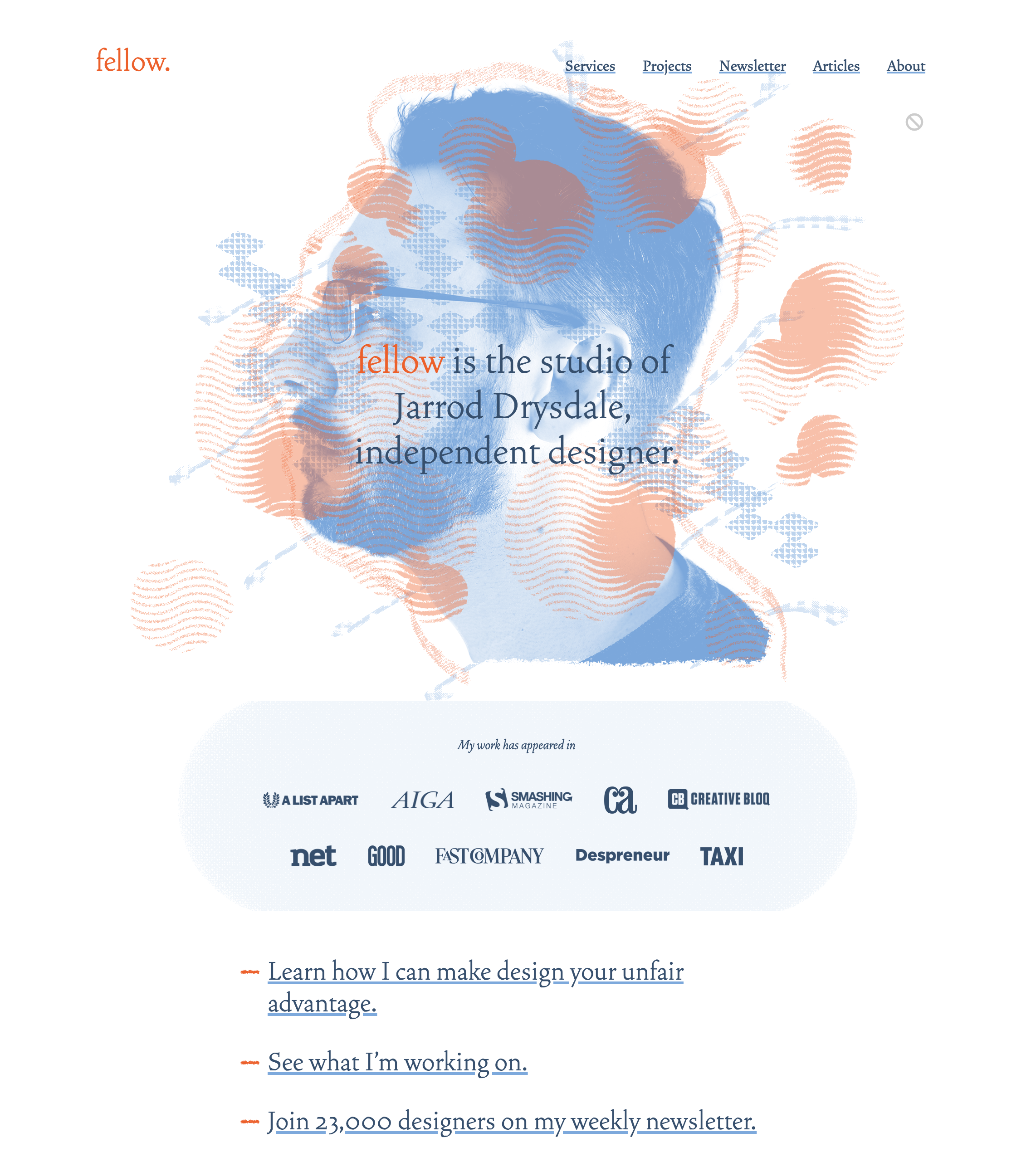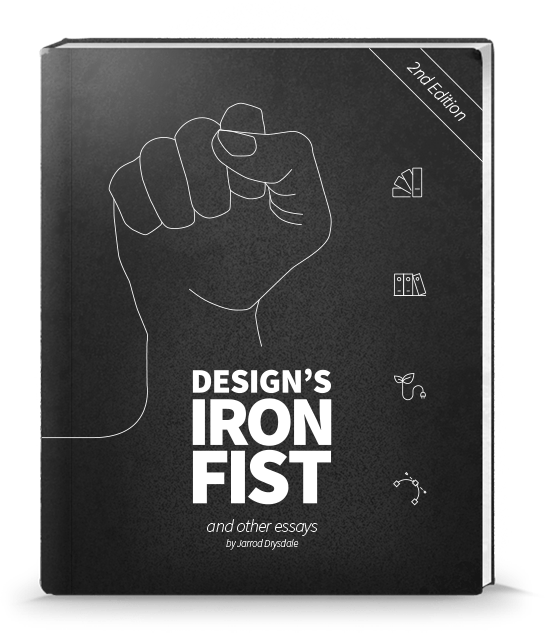One of the bad parts of being a designer is hitting a losing streak—one of those times where every idea you have is a bad one.
Most designers don’t talk about their losing streaks, and they definitely won’t show you what the concepts they produced during a bad streak look like.
But I’m about to share a bunch of ugly designs I made recently while I was redesigning my site.
Here’s what the final design ended up looking like:

Lots of people ended up liking this design, but behind the scenes, I really struggled.
I created 6 (SIX!) design directions before I finally found the one that became the final design. That is extremely abnormal for me—usually I find the best approach via sketching and rarely waste time creating a mockup up that doesn’t become the final design. But this time, I created 6 mockups that I couldn’t use.
I had failure after failure—every idea looked great as a sketch but completely fell apart when I began the design. And, I found that I wasn’t able to judge my work clearly. I’d fall in love with an idea, only to come back the next day and realize how terribly wrong I’d been.
(Want to see what those awful design concepts looked like? I’m releasing a video showing the entire process of redesigning my site, including all 6 ugly drafts, and it’s only available to students of my design course, TheorySprints. If you want to see them, join the course!)
All these failures were completely private, so they were relatively tiny failures.
But even tiny failures can hold power over you if you let them. We designers have a tendency to look down on ourselves for these kinds of mistakes. We make these tiny failures out to be a big deal. We’re embarrassed of our old work, and we beat ourselves up for not producing a perfect design on the first attempt.
This attitude causes us to avoid taking risks, and that is a real shame because taking risks is an essential part of creative work.
The individual subjects him- or herself to difficult and challenging tasks that require performance exceeding current levels… Learning to manage failure—and not to fear failure—is an important means of boosting creativity.
Dr. Robert Epstein, Encyclopedia of Creativity, page 765
Psychologists and creativity researchers have identified failure and risk tolerance as key skills in highly creative people.
Tiny failures are part of being a designer. Every creative person experiences these tiny failures and rough patches. To continue improving the quality of your design work, as we all want to, you need to keep trying ideas that might turn out to be bad. You need to give bad ideas a chance.
Learn to tolerate your tiny failures. Forgive yourself, and keep moving. Don’t let them slow you down.
But that’s only the first step to conquering failure.
Tolerating failure isn’t enough. You need to learn to love your bad ideas and the challenge of moving past them.
As I was redesigning my site, one of the directions I tried relied heavily on illustrations. Usually, if I’m relying on my nonexistent illustration skills, I know I’m in a bad place. But I kept going anyway. Why?
Because challenging ourselves is what leads to growth. The second, more important step to overcoming failure is gaining the confidence to seek out challenges and take risks. You need to get comfortable enough with tiny failures that you are willing to seek out risky concepts and situations where you’re more likely to fail.
Now, I’m not asking you to fetishize failure like a startup dudebro (fail hard, fail fast, fail often is silly advice).
However in the context of creative work, tiny failures are essential. Trying those illustration ideas was the step that led me to the concept I ended up using as my final design. If I’d never tried the illustrations, I never would have found the idea that was worth using.
Having bad ideas in private isn’t a risk if you keep them private and reserve time and space for yourself to move past them. But more importantly, working through those bad ideas will help you be more creative and find good ideas that are worth developing.
Bad ideas lead to good ideas. Seeking out challenges and risks is the basis of creativity. If you allow tiny failures to derail your work or use them as an excuse to avoid trying ideas that might not work out, you are limiting yourself. You are cutting out one of the most important parts of the design process.
Relishing bad ideas and seeking out risks isn’t about numbing yourself, brainwashing, or adopting some bizarre doublethink. I’m not telling you to become detached. It’s just that bad ideas are only frustrating because you say they are frustrating. You can learn to accept them as part of your process and appreciate them for their role in bringing about great ideas.
Those bad concepts and tiny failures are actually a bit endearing when you realize they paved the way for the work you’re proud of.
